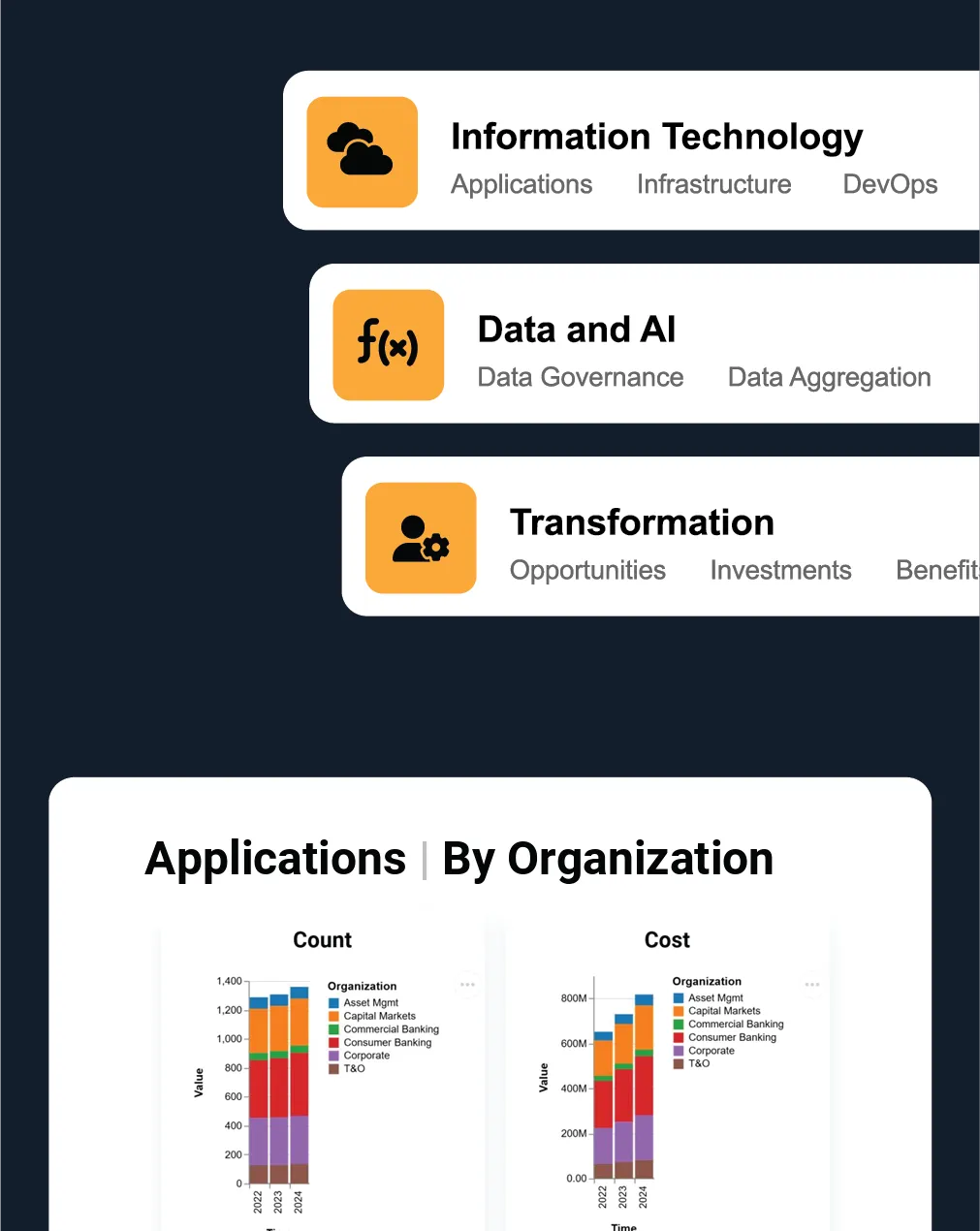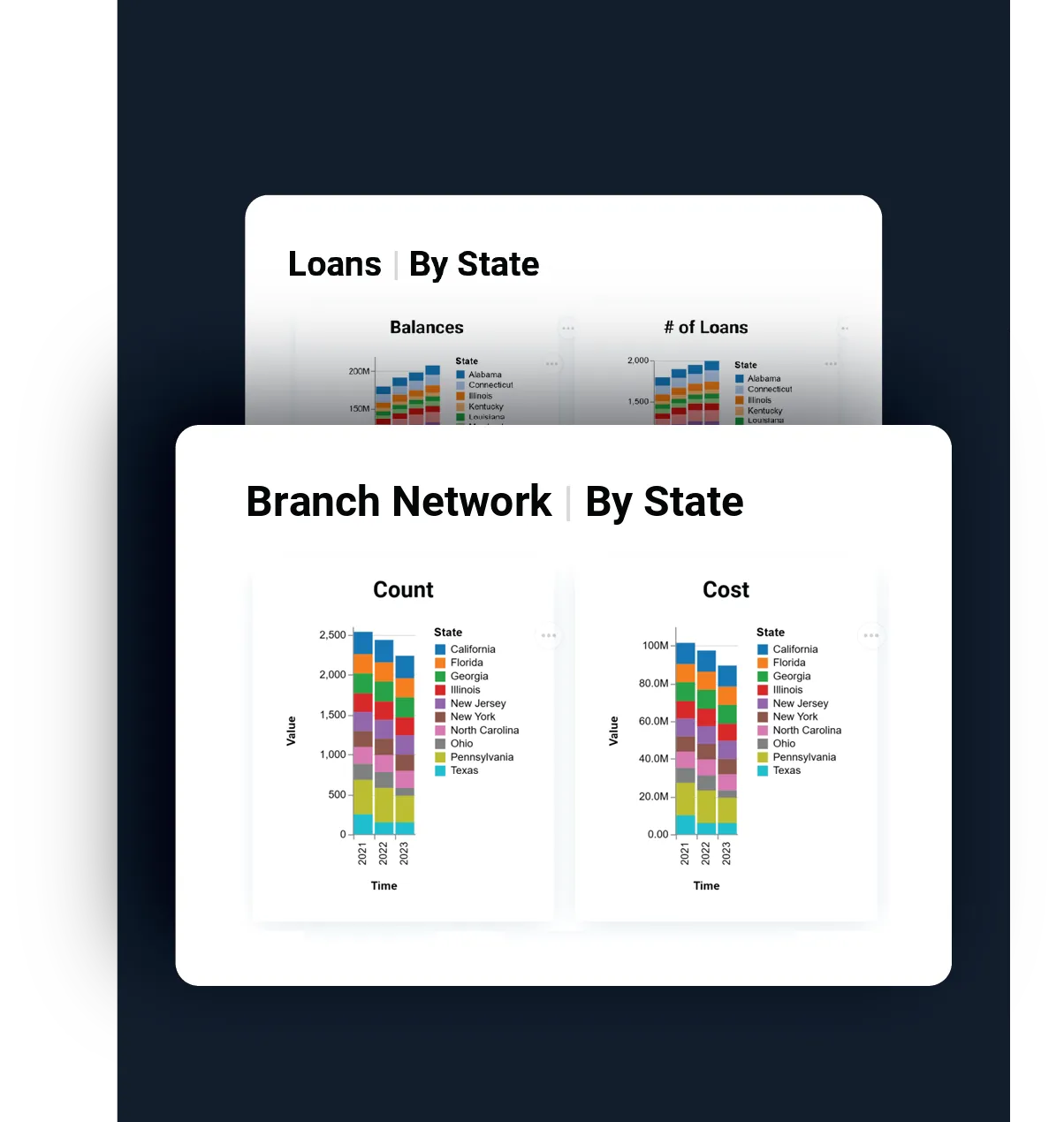Built for the business leaders of the future
Get ready-to-use enterprise intelligence that drives growth, cuts costs, and manages risk—in days, not months. No building, no waiting—just real insights, ready when you need them.

Get an extensive library of pre-built analytics solutions designed to solve critical business issues – right out of the box.

Choral organizes and connects the data you already have, identifying high-value data – without lengthy IT projects.

With 25+ years of executive and boardroom expertise, we built Choral to solve the real challenges business leaders face – not just to generate reports.
“Executives don’t need more dashboards—they need answers. We built Choral to deliver real business intelligence, not just data. With pre-built solutions and AI-powered insights, we’re giving leaders the power to make smarter decisions in days, not months.”

From the boardroom to the C-suite, Choral provides the intelligence that executives, CFOs, CIOs, CROs, and risk leaders need – without the complexity of BI tools.

Revenue Growth & Cost Efficiency
Analyze cost drivers and revenue drivers to accelerate revenue growth and improve cost efficiency.
Workforce & Procurement Optimization
Analyze HR structure, costs, and skills. Monitor supplier spend, performance and risks.

Risk & Compliance
Understand and manage risk across your business

AI & Digital Transformation
Identify and quantify improvement opportunities. Plan and monitor transformation project execution and risk.

Cybersecurity & IT Strategy
Analyze IT applications and infrastructure. Assess cybersecurity risks. Align your IT / cyber roadmap with the business.

Mergers and Acquisitions
Identify and quantify synergies. Monitor acquisition integration and risks.
No need to build analytics from scratch—choose a pre-built solution aligned with your business priorities.
Choral’s patented Data Mesh technology helps you identify the right data, organize and connect it to deliver intelligence in days, not months.
Skip the dashboards. Choral delivers answers and insights into core business issues – empowering executives to act with confidence.
We refuse to accept a future where enterprises are stuck waiting months for insights, drowning in disconnected data, and relying on outdated processes to make critical decisions.

Designed for the teams that drive business success:

Gain visibility, transparency and insights to enterprise performance, capabilities and risks.

Optimize the linkage between financial performance and business operations to reduce costs and drive revenue growth.

Mitigate enterprise risks with integrated analytics across your enterprise.

Magnify IT’s business value with intelligence to deliver operational excellence, digital transformation, and effective risk management.

Accelerate collaboration to understand and mitigate cybersecurity risks.

Accelerate sales, marketing, and customer intelligence

Streamline sourcing and supplier management.
“With Choral, we finally have an enterprise intelligence platform built for business, not IT. It delivers insights faster than any BI tool we’ve used.”
Get insights in days, not months
No need for expensive BI builds or consulting fees
Turn intelligence into action—without IT bottlenecks
Align teams with real-time, trusted intelligence
Pre-Built Analytics That Drive Profits & Reduce Costs
Lighting Fast Business BI Pre-Built Analytics




Copyright © 2025 | CHORAL System | All Rights Reserved | Privacy Policy
E: contact@choral.com | P: (404) 491-0783 | A: 2090 Dunwoody Club Dr, Atlanta, GA 30350
Innovated by HEROBrand